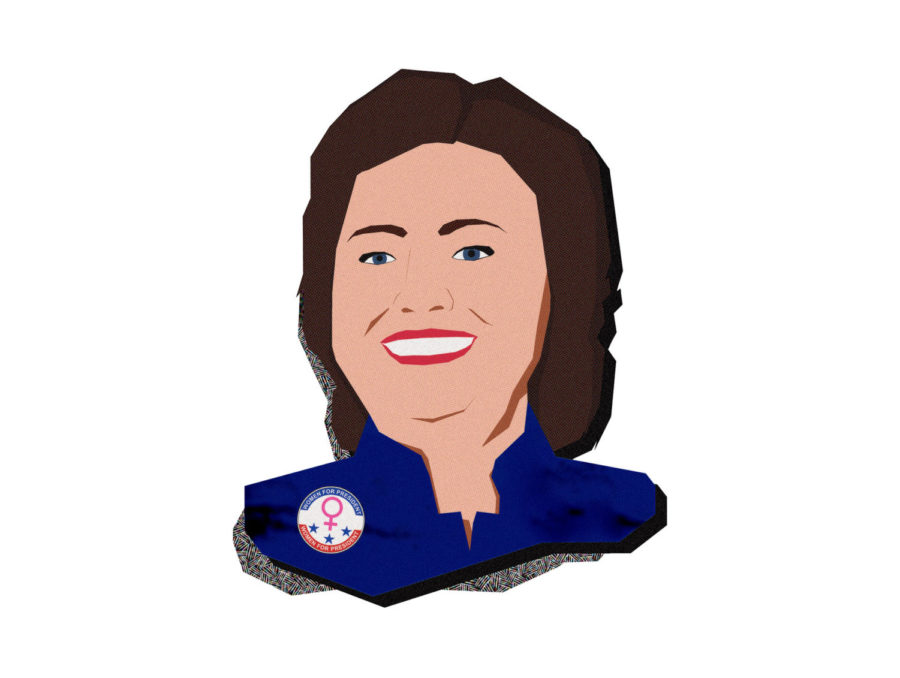The abridged version of this article appeared in the June. 2023 print edition of The Mirror. This is an uncut version.
In 2016, the exciting news of Hillary Clinton’s presidential campaign electrified millions of young girls and women.
The prospect of a woman finally being elected president ignited enthusiasm and anticipation in many.
However, not everyone shared this sentiment.
Donald Trump’s victory came as a shock to those who believed that Clinton was poised to win. Despite reports of her winning the popular vote, the country’s dream of having a female president for the first time was shattered.
Given the lack of female presidents in the past century, it’s disheartening to consider the slim possibility of a woman being elected to the office within the next decade.
A study done by political scientist Christopher Berry, who teaches at the University of Chicago Harris School of Public Policy, found that women see themselves as unqualified and underestimated by men, due to the mistreatment of prominent female politicians in the media.
The disparity in how women are portrayed compared to their male counterparts influences public perception. For instance, a New York Times article highlights how Hillary Clinton was criticized for passionately expressing her view on gun violence. In response, she pointed out the double standard, noting, “when women talk, some people think we’re shouting.” Similarly, Pennsylvania Congresswoman Madeleine Dean received advice not to cross her arms to avoid appearing angry.
On the campaign trail, women must be more vigilant than men about their appearance and actions. This heightened scrutiny stems from the concern that if they don’t meet the public’s expectations or standards, the media will cast them in a negative light.
Even when women fare well in elections against their male opponents, women aren’t running for office at the same rate as men. Many feel discouraged from doing so. The Citizen Political Ambition Study, a study in 2021 surveying elected officials, lawyers, businesspeople, educators and political activists about their interest in running for office, revealed that nearly 60 percent of men considered doing it, but nearly 60 percent of women did not. Only 20 percent of the women surveyed felt that they were qualified to run for office at all.
Historically, the process of running for office itself has always been inherently for men. And the current demographics and structure of the U.S. Electoral College makes it nearly impossible for women to win.
Candidates who have held office in the past hold an incumbency advantage over their challenger candidates. About 89 percent of U.S. House members run for re-election, and 97 percent of incumbents who run are re-elected. Thus, there are few seats open in any given election cycle. But with the majority of representatives being disproportionately male, this leaves only one option for female representatives: wait for male representatives to retire.
The belief that women aren’t suited for presidency was further reinforced when six women running for president in the 2020 election — Elizabeth Warren, Tulsi Gabbard, Kamala Harris, Amy Klobuchar, Kirsten Gillibrand and Marianne Williamson — dropped out of the race.
Given the outcomes of both the 2016 and 2020 elections, the future looks discouraging. If a woman with the popular vote couldn’t win in 2016, and six women faced low support in 2020, the odds of a woman winning a presidential election in the near future seem slim.
While Kamala Harris being elected the first female Vice President is a notable achievement — especially for women of color — America should’ve made more progress in 247 years. Women have been eligible to run for president since 1872 and we have yet to see a woman hold the highest office.
Denmark, New Zealand and Finland have all been led by women who have demonstrated exceptional leadership during crises. For example, amidst the 2020 pandemic, these female leaders acted swiftly and effectively to protect their citizens, while U.S. President Trump downplayed the rising COVID-19 cases and silenced scientists on social media.
If other countries prosper with female leaders, there is no reason why America shouldn’t be able to. In this regard, the United States is lagging behind the rest of the world. A YouGov poll shows that 55 percent of Americans hope to see a female president in their lifetime, while only 50 percent actually expect it to happen. As optimistic as these results may seem, they do not align with reality.
When Americans chose to vote for candidates like Donald Trump and Joe Biden (both of whom faced multiple sexual harassment allegations) over the qualified women who ran in 2020, it suggests that despite being ready for a female president, the electorate remains hindered by ignorance and misogyny. Countless stories about influential female figures and educational efforts proving that women can achieve anything men can, have tried to promote the mindset of gender equality. The belief that women are less capable than men in the political arena won’t suffice.
Centuries without a female president, coupled with the disheartening outcomes of the 2016 and 2020 presidential elections, have fed the notion that women don’t belong in politics. Voters just can’t seem to set aside their misogynistic beliefs to elect a female leader.
Despite the increase of female representation in leadership roles like state legislators and mayors, it’s not enough. There needs to be more female representation in the highest office. In the House of Representatives, only 125 representatives out of 425 are women. In the Senate, 25 out of 100 are women. As of 2020, the US ranks 82nd in the world for women’s representation in national legislatures.
One way to boost representation of females in US politics is through political parties. Goals must be set to increase the recruitment of female candidates, especially women of color, for primary elections. National and state party officials must collaborate with interest groups or campaigns like She Should Run and Run to Win that recruit and train women to run for office.
Funding is another significant player in the success of candidates. According to 2020 research from the Center for Responsive Politics and Common Cause and Representation, political action committees (PACs), groups organized to elect or defeat candidates, underfunded women running in open-seat races. Individual donors and PACs need to set goals that improve and prioritize the amount of women they support in campaign cycles.
And, of course, by focusing on qualifications, promises and the candidate’s history rather than gender, paves the way to a golden future. This shift would empower young girls to confidently aspire to the presidency, inspired by the example of a female leader in the White House.



